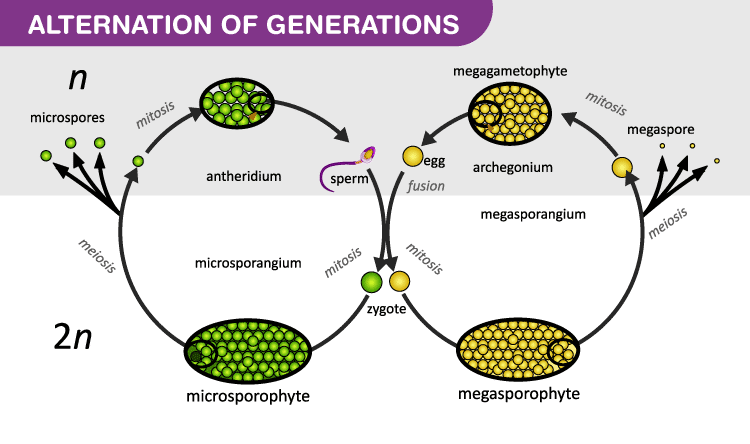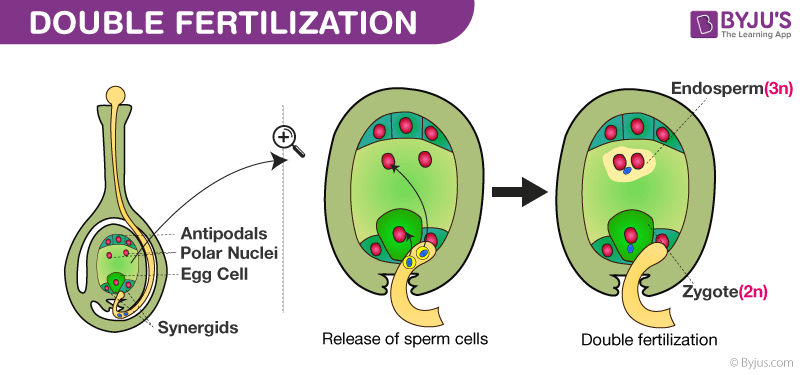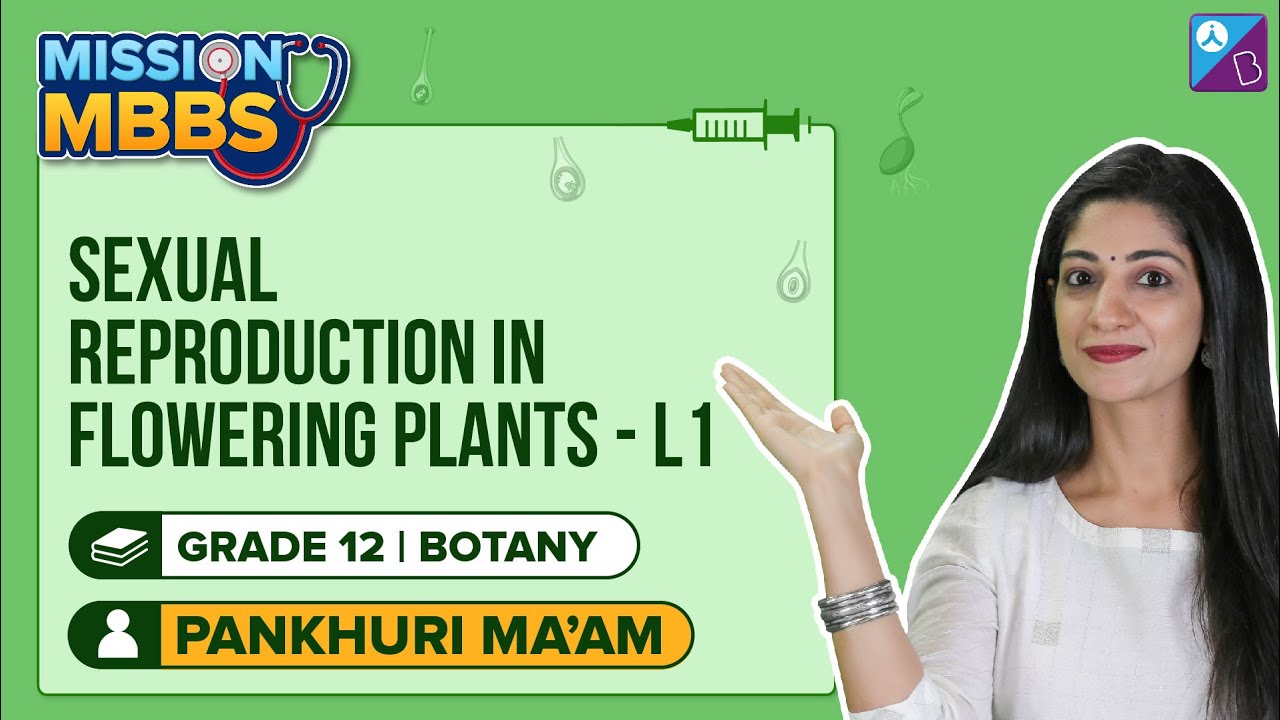Flowering plants are termed angiosperms. The flowering plants are the most dominant vascular plants that are found all around the world. Here, let us learn more about the life cycle of angiosperms in detail.
Table of Contents
- What Are Angiosperms?
- Angiosperm – Life Cycle
- Significance of Fertilisation
- Frequently Asked Questions
What are Angiosperms?
Phanerogams or spermatophytes are a plant division that comprises plants that bear seeds. This includes the gymnosperms as well as the angiosperms. Angiosperms are a plant group with flowers that produce seeds enclosed within a carpel. In other words, these are flowering plants that produce seeds within a fruit. Whereas gymnosperms are a plant group comprising seed-bearing plants with seeds unprotected by a fruit. Examples – conifers, cycads, etc.
Examples of angiosperms – Roses, lilies, eggplant, tomato, rice, wheat, mango, etc. These plants typically have well-differentiated bodies with fully developed shoot and root systems. They can survive in various habitats.
Angiosperms – Taxonomy
The taxonomy of angiosperms is based on several primitive and advanced characteristics proposed by many systematists like Linnaeus and Takhtajan. Their ideas established different principles in taxonomy which are now helping us to understand the concept of angiosperms’ phylogeny.
|
Kingdom |
Plantae |
|---|---|
|
Division |
Spermatophyta |
|
Infradivision |
Angiosperms |
Angiosperms were formerly termed Magnoliophyta. This division of flowering plants is further divided into 2 classes:
- Liliopsida (Monocotyledons) – Banana
- Magnoliopsida (Dicotyledons) – Sunflower
Here, the Magnoliopsida includes a few primitive angiosperms. They typically bear orthotropous ovules.
See more:Difference between Anatropous and Orthotropous Ovule
Darwin has described the origin of angiosperms as a mystery. Angiosperms are said to have originated during the cretaceous period.
Angiosperm – Reproduction
The flower is the reproductive structure of an angiosperm and can be either unisexual or bisexual. One of its primary duties is to reproduce seeds through sexual reproduction. Also double fertilisation is a characteristic feature of Angiosperms. Here, one female gamete unites with two male gametes. After fertilisation, the ovary forms the fruit, and the ovules form the seeds while the remaining parts wither off.
Angiosperm – Life Cycle
The angiosperm life cycle typically demonstrates the alternation of generations with haploid gametophyte and diploid sporophyte alternation.

The sporophyte stage is the primary period of an angiosperm’s life cycle. Angiosperms are heterosporous. This means they produce bigger megaspores and smaller microspores.
- They produce microspores, which will deliver pollen grains as their male gametophytes. Likewise, the megaspores germinate into the egg cells or female gametophytes. Like any other multicellular organism, the angiosperm also generates gametes by meiosis.
- Inside the anthers’ microsporangia, male gametophytes are cleaved by meiosis to create haploid microspores. This further goes through mitosis and leads to the formation of pollen grains.
- Every pollen grain contains two cells – a generative cell and a pollen tube cell. The generative cell will produce haploid sperm.
- Meanwhile, the ovule contains the megasporangium, which is safeguarded by two layers of integuments and the ovary wall. Inside every megasporangium, a megasporocyte goes through meiosis, creating four megaspores (one large and three small).
- Out of four, only the largest megaspore survives to produce an immature megagametophyte (embryo sac). This megagametophyte further cleaves three times to form an eight-celled stage. Four cells out of these eight shift towards the pole of the embryo sac. Two cells shift towards the equator region and fuse to form a 2n polar nucleus.
- A fully grown embryo sac has two synergids (helping cells), two polar nuclei, three antipodal and one egg cell. Usually, the sperm cells are deposited inside this embryo sac with the help of a pollen tube.
- The pollen tube reaches the micropylar end of the ovule and makes its way into one of the synergids. After reaching the destination, it releases the sperm cells.
- One sperm fuses with an egg cell to form a diploid zygote (2n). The second sperm fuses with the two central polar nuclei to form a triploid zygote (3n).
- The zygote matures into an embryo that has two (dicot) or one (monocot) leaf-like structures known as cotyledons and a radicle, or tiny root. The endosperm is formed as the second sperm cell fuses with the two polar nuclei. This endosperm tissue acts as a food reserve.

Significance of Fertilisation
Much of agriculture is solely dependent on angiosperms. Thus the fertilisation process invariably leads to great economic significance. They help in giving a new genetic identity to the zygote.
After fertilisation, the ovary tissue forms the fruit and the ovule becomes the seed. Moreover, the double fertilisation feature is unique to the angiosperms. It gives rise to endosperm tissue which acts as a food reserve and provides nourishment to the developing embryo. This further increases the seed viability.
Keep exploring BYJU’S Biology to learn more such exciting topics.
Also Check:
Recommended Video:
